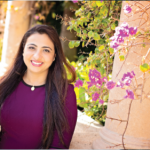His work received a huge boost when Bill Gates, the founder of Microsoft, touted the “unbelievable” 10- to 15-minute Khan Academy tutorials that he had been using with his own kids. As Gates dryly observed, “I’d say we’ve moved about 160 IQ points from the hedge fund category to the teaching-many-people-in-a-leveraged-way category. It was a good day [when] his wife let him quit his job.”7 Thankfully, Khan’s wife, Umamia, is a rheumatologist, a specialty renowned for its altruism.
Brave New World
The Khan Academy videos have moved beyond explaining elementary school math principles to children. Though there is a burgeoning medical section, including some helpful videos that outline fundamental principles of immunology and an interesting overview of cervical spine radiology, there are few rheumatology-focused offerings.8 To an extent, this void is being addressed by the highly useful “Resources & Tools” section of the “Education & Careers” tab on the ACR website (www.rheumatology.org), which hosts an interesting array of self-teaching resources. It also has the world’s greatest collection of freely available rheumatology teaching slides. Stay tuned for some exciting new developments regarding the ACR’s online teaching presence.
It’s an exciting time to be a learner, though some readers may be hesitant about entering this brave new world of education. May I suggest another learning strategy that may sound more appealing? It has long been known that music can serve as a mnemonic device on learning and memory and the underlying plasticity of neural networks. Researchers working at the Center for Biomedical Research In Music in Fort Collins, Colo., have found evidence that melodic-rhythmic templates in music may drive internal rhythm formation in the cortical networks involved in learning and memory, and thus enhance memory acquisition.9 Pearl Jam playing in the background seems to effectively synchronize the learning centers deep in my entorhinal cortex, although experts in the field have considered Mozart to be a superior music choice for effectively enhancing spatial–temporal reasoning.10 Either way, don’t forget to bring your musical accompaniment with you to class. After all, you may learn more when listening to Eddie Vedder or Wolfgang Amadeus than from the Nobel laureate lecturing to the class.
Dr. Helfgott is physician editor of The Rheumatologist and associate professor of medicine in the division of rheumatology, immunology, and allergy at Harvard Medical School in Boston.
References
- Jason Alvarez, director of educational technologies, Harvard Medical School, personal communication November 2012.
- Meglio F. A “disruptive” dean eyes technology changes at Owen. Published July 19, 2013. Available at www.businessweek.com/articles/2013-07-19/a-disruptive-dean-eyes-technology-changes-at-owen. Accessed August 14, 2013.
- Harder B. Are MOOCs the future of medical education? BMJ 2013;346:f2666.
- Lucey CR. Clinical problem solving. Available at https://www.coursera.org/course/clinprobsolv. Accessed August 14, 2013.
- Prober CG, Heath C. Lecture halls without lectures —A proposal for medical education. N Engl J Med. 2012;366:1657-1659.
- Deslauriers L, Schelew E, Wieman C. Improved learning in a large-enrollment physics class. Science. 2011;332:862-864.
- Kaplan D. Sal Khan: Bill Gates’ favorite teacher. Published August 24, 2010. Available at http://money.cnn.com/2010/08/23/technology/sal_khan_academy.fortune/index.htm. Accessed August 14, 2013.
- Khan Academy: Immunology. Available at www.khanacademy.org/science/biology/immunology. Accessed August 14, 2013.
- Thaut MH, Peterson DA, McIntosh GC. Temporal entrainment of cognitive function. Ann NY Acad Sci. 2005;1060: 243-254.
- Rauscher FH, Shaw GL, Ky KN. Listening to Mozart enhances spatial-temporal reasoning towards a neurophysiological basis. Neurosci Lett. 1995;185: 44-47.


